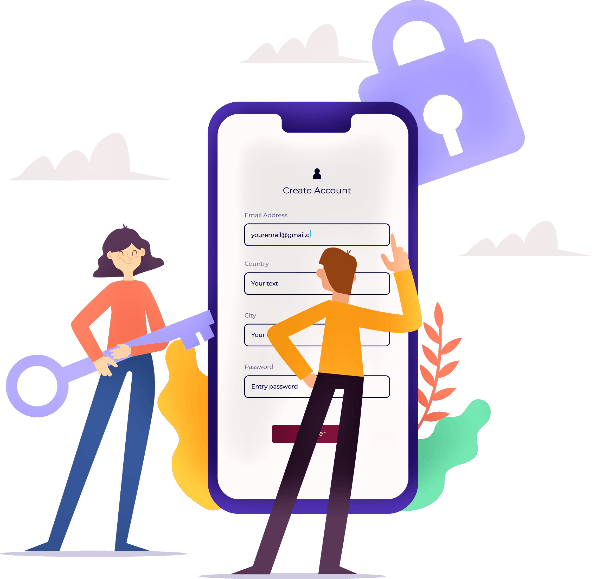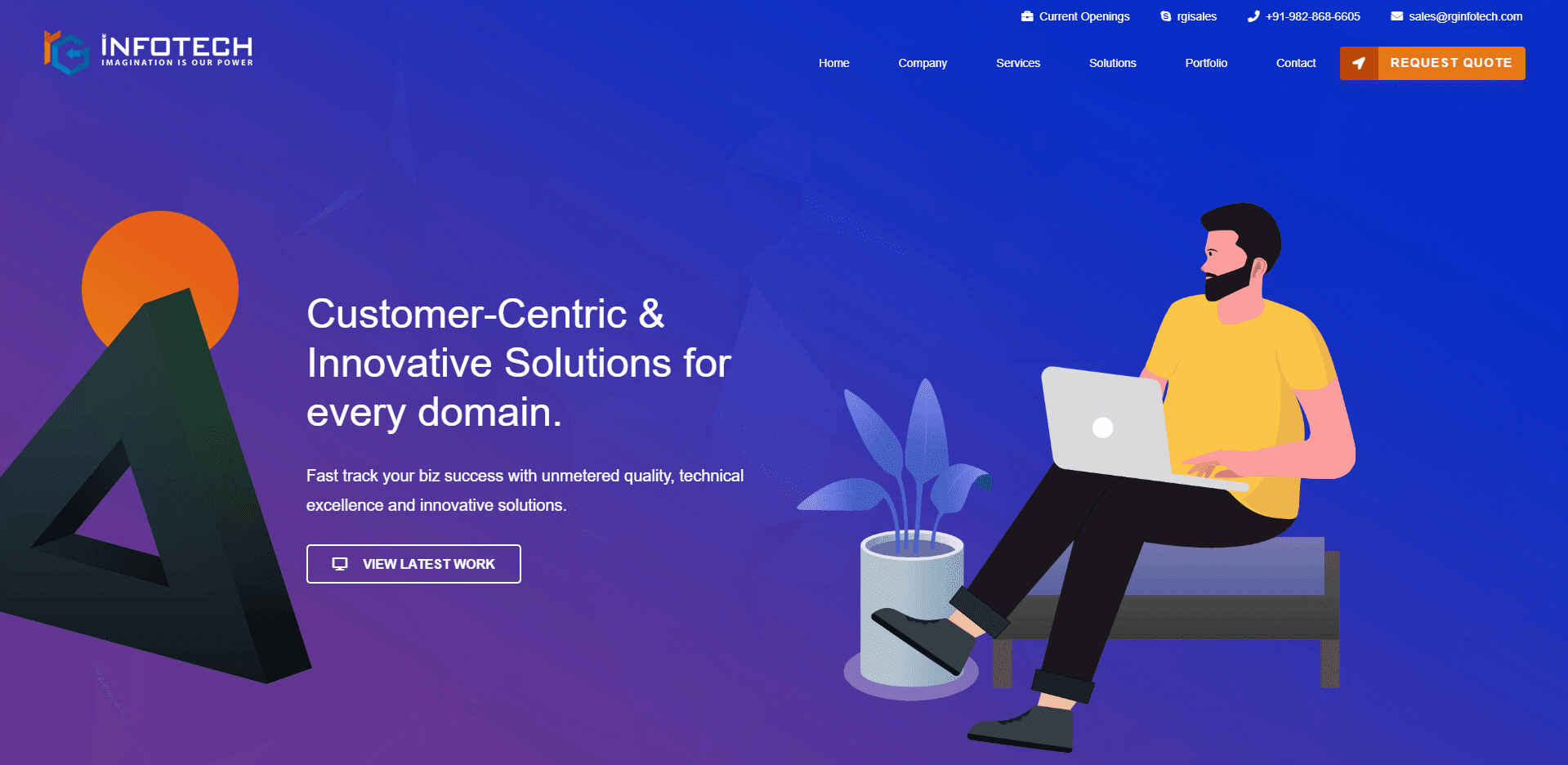How to Create A Successful Social Media App Like Instagram? (Facebook, Massaging, TikTok)

Social network mobile app development in today’s digital arena is quite exciting. With billions of users worldwide, there couldn’t have been a better time than this for exciting applications in the sphere of social networking.
According to Statista reports, Social media has a vast and growing reach as it caters to the expanding global digital population. Simply social networking sites have evolved into vital components of business, dating, political, and communication life. Indeed, the internet and social media have become so included in how we relate to and engage the world.
As of 2024, internet users globally spend 143 minutes per day on social media, slightly declining from 151 minutes compared to the previous year. At the top is Brazil, which has users spending an impressive three hours and 49 minutes each day on social media. Those in the U.S. spend an average of just two hours and 16 minutes on those platforms daily.
If you are interested in social media app development, here’s a roadmap that will walk you through the process to an easy achievement of successfully creating a social media app.
Why To Invest In Social Media App?
Investing in social media apps is profitable for newcomers coming into the market. Some of the benefits of investing in social apps are as follows:
-
-
-
- Huge User Base: Billions are utilizing social media every day; thus, a tremendous space to tap into.
- Niche Markets: Target special interests or communities, such as filling a gap that the mainstream is not providing and, therefore, retaining niche audiences.
- Revenue Generation: Monetize through advertisement, in-app purchases for features, paid-for features, and collaborations with specific brands to reach particularly targeted demographics.
- Advances in Technology: For those developments in mobile technology and user experience design, an application is more likely to be engaging.
- Increased digital connectivity: For users to render communication or community building, it is impossible without the presence of a social app.
- Social Media Trends: Social media trends change; hence, your app can change its direction and adapt at times and, therefore, keep long-lasting relevance in a dynamic market.
-
-
What are The Different Types of Social Media Apps?
Here are some of the main types of social media apps divided into 8 Categories:
-
-
-
- Social Networking Sites: Applications such as Facebook and LinkedIn, connect the user for personal and professional networking.
- Photo and Video Sharing Site: Primarily using photos and videos to share thoughts and view others’ photos and videos on platforms such as Instagram and Snapchat.
- Messaging Sites: Real-time messaging for text, voice, and video through applications such as WhatsApp and Messenger.
- Micro-blogging Sites: Short posts of updates, discussions, and sharing content through channels like Twitter.
- Content Sharing Apps: Applications such as TikTok or YouTube, where users can create and share new videos and content.
- Online Forums: Online platforms such as Reddit where people can have conversations and share views on matters of interest to them.
- Niche Social Networks: These applications are targeted towards a particular hobby or group of people, such as athletes and Strava, book lovers, and Goodreads.
- Professional Networking Apps: Applications such as LinkedIn, focus on career development and job search.
- Event and Community Apps: For example, Meetup, tools that aid in event organization and community connection.
-
-
How To Create A Social Media App in 7 Easy Steps
Let’s discuss 7 easy steps to create a social media app Successfully:
1. Identify Your Niche
-
-
- Market Analysis: Start with a market analysis to understand what is presently offered by all social media applications. Explore the gaps that you can fill through your application. For example, there are a few platforms that cater to specific hobbies or interests.
- Identify a Target Market: A social networking application for social media like dog lovers might have features different from one for sports fans, to use another example. Knowing your audience will thus guide specific action regarding the design of the features you will need, which may again prove to be a differentiator for your social media business.
-
2. Design Friendlier Interfaces
-
-
-
- User Interface (UI): The social app you’re going to design should have a user-friendly interface. It’s designed in such a way that the users can feel they can browse through your app without confusion.
- Navigation: You will implement a linear and simple menu structure for your app. It shall not take too much time for the users to find any of the key features such as messaging, content sharing, or profile settings.
- Visual Appeal: Use a balanced color scheme and appealing graphics to attract your preferred target. A good design enhances the UX so that people will spend more time on your app.
- Responsive Design: Your social media application should work smoothly on all gadgets, including handsets and tablets. A responsive design fits any size of the screen and thus reaches more users.
-
-
3. Essential Core Features
To attract users, your social network app should include the following in its core part:
-
-
-
- User Profiles: Users should have been able to customize their profiles. This will make them feel like owners and members of a community.
- News Feed: Implement a dynamic news feed updated with real-time posts either from friends or subjects that users may follow. This will give them a reason to come back to your app again and again.
- Messaging: Access for private messaging. This encourages communication between users, hence increasing user engagement.
- Content Sharing: Provide the ease of content sharing, including photos, videos, or links. The easy way to share is a good enabler for user activity and retention.
- Groups and Events: Allow people to form groups based on shared interests and host events. This application supports community building on your social network.
-
-
4. Security And Privacy Issues
Protection and privacy go hand in hand in the digital world. Implement the following measures.
-
-
-
- Encryption: Encrypt all the user information by transmission. This would keep any third party from accessing sensitive passwords and personal details.
- Privacy Settings: Include an option for user control of privacy. Allow users to decide who they want to see their profile or engage with them.
- Content Moderation: Ensure mechanisms exist that allow for reporting inappropriate content. A dedicated moderation team specifically designed to keep the social network safe will help to keep it free from free interaction by users.
-
-
A social media app that is safe will create confidence and thus increase user participation.
5. Monetization Strategy
After you launch your social media application, consider how to monetize it:
-
-
-
- Advertisements: Include targeted advertising, so that businesses can reach specific demographics. This could be a big source of revenue.
- Premium Features: Offer a subscription model for such unique features or content. For example, you may charge the user for analytics with advanced features or with an ad-free experience.
- Partnerships: Collaborate with brands for sponsored content or promotional campaigns. Not only does this generate revenue but it also gives a good experience for the users.
-
-
Such strategies can transform your social media business into a profitable venture.
6. Mobile App Marketing
Now, social media app development is just the starting point; effective marketing will help to attract users:
-
-
-
- Social Media Promotion: Promote what your app features through the same Instagram, Facebook, or Twitter. This will bring in traffic and keep it there with regular updates and interesting content.
- Collaborate with Influencers: Select influencers from your niche. Their word of mouth will increase the popularity of your app.
- App Store Optimization (ASO): Optimize the app’s listing in app stores. Use relevant keywords in your description to improve visibility. Good ASO can increase download rates substantially.
-
-
Efficient marketing will make social networking apps achieve prestige and support their user base’s expansion.
7. Continual Improvement
Developing a social media platform is just the starter. Keep the users engaged by taking a continuous improvement strategy:
-
-
-
- User Feedback: Obtain regular feedback from users and analyze them. This way, you will be able to know where the pain points exist and how you can enhance them.
- Performance Analytics: You should track the overall performance of your app at different points in terms of engagement rates and retention. This information will then give you the necessary details of exactly what and how many updates to roll in which feature.
- Regular updates: App freshness can be provided by updating it, adding new features, and bringing in something new through the requirements of users and market trends. This ensures new users constantly keep coming in and existing ones are held on to.
-
-
How Much Does It Cost To Develop A Social Media App?
The average social network app development cost depends on several factors. In general, the development costs are between $20,000 and over $200,000. Major factors affecting the price include complexity, features such as messaging profiles, multimedia content sharing; design quality; location, and expertise of the development team.
Back-end development, including security measures, and updating and maintaining the app may add more to the cost. A simple app would keep the cost lower, while advanced functionalities and custom designs would strain the budget. Thus, it would demand heavy research and planning before a good launch could be made.
Develop A Successful Social Media App With RG Infotech
Want to develop your ideal Social Media App? Partner with RG Infotech the best social media app development company. The technological teams create engaging, user-friendly social networking applications for your desired target group.
The social application designs are intuitive and highly secure. All of the key elements that drive community engagement are included within them. Using proven strategies and innovative solutions, your social media platform stands out against a competitive landscape.
Conclusion
A great social application is designed through thoughtful planning and a deep understanding of your audience, with commitment being the continuous improvement project.
These are the steps for the social media platform development, that will guide you in creating a social media app for yourself and thrive the early benefit for getting into the market and grabbing the profits.
Prepare to know the social media apps. Let’s build a social network app now!
Frequently Asked Questions (FAQs)
Find your niche. Do sufficient research about the various social media apps that exist and identify where the market is deficient. Identify your target audience and tailor the features of the app to their needs.
Design of Apps: The user interface has to be rather clean, intuitive, and a clean interface, which will add to user engagement and retention. Add intuitive navigation, attractive graphics, and responsive design to make the experience the best on all devices.
The primary functions of your social networking application will include, at least the ability for user profile functionality, news feed, messaging functionality, content sharing, and groups or events. These will encourage interaction and make your social network come alive.
There are many monetization strategies such as Ad targeting, paid feature subscriptions, and brand collaboration. Select the ones that best fit for your app’s needs and the type of user.
It will be promoted through social media, influencer marketing, and optimization of the listing on the app store. Engaging content along with regular updates will be able to attract more and keep the existing ones.
Absolutely! Continuous feedback keeps helping you know which areas need improvement and what the users like. Keep updating your app according to the kind of feedback it has; thereby it will keep attracting users and new ones will be attracted as well.
Track and follow trends and user behavior, and be open to innovation. Always look for and analyze your competitor’s propositions, and adjust your application so that it remains relevant and interesting because the needs of users evolve.



 rgisales
rgisales



